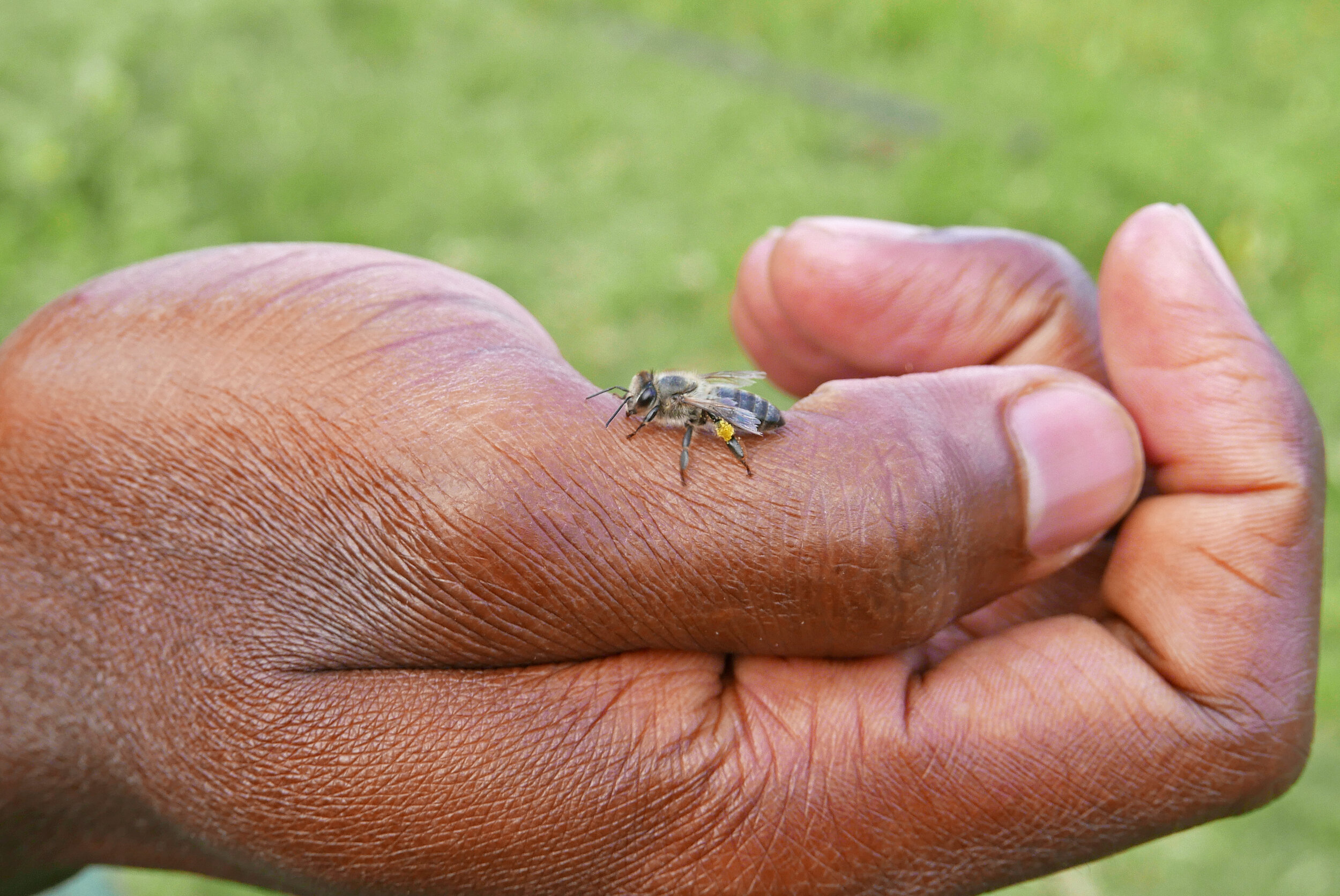Honey Bee Paralysis
The bee sits lazily on my green scarf. Notice the yellow pollen on her back legs.
Upon arriving home, I noticed a bee was hanging on some of my laundry. A scarf was on the line, blowing in the wind, with the insect clung to it. I admired the bee for a while, noticing the yellow pollen she was carrying on her legs. I then decided that I would go inside to get my camera, unsure if she would still be there when I returned. Sure enough, she was still there, clinging to my green scarf. After a few moments a large gust of wind came and blew the bee off, but to my astonishment she landed on the ground not too far away.
Why was this bee not flying?
She could have been a bee from one of our hives; the house is not far from the central apiary. Still, the surrounding forests are normally buzzing with bees, particularly in the early evening when bees are out foraging.
I gently picked her up on my finger - she just sat there as I took some photos of her. I then called out to Salimu, one of the Maasai Honey beekeepers, to come look at the curious bee. I mentioned how the bee somehow seemed lazy; surprisingly, it had not yet flown away.
He studied the bee for a moment and then said - this bee has a virus, thats why it cannot fly. He pointed out that the abdomen of the bee was more black than usual and also the bee’s wings were not whole - it was as if small pieces had begun to break off of them. He explained that the bee will eventually lose the ability to fly, and will die. Until this happens, the bee will become confused, lose directional capabilities and become increasingly weak.
The infected worker bee walks on Salimu’s hand.
Examining the bee from the top really show the symptoms - a blackened abdomen, hair loss, and wing damage.
Upon further research I discovered that we had likely witnessed a bee suffering from “Chronic Bee Paralysis”. It is a virus that largely affects the nervous system of the bee, causing a decline in motor ability, confusion, and eventually the inability to fly. The bee may either display a bloated abdomen, or turn black. It is also common for the bee to show abdominal hair loss.
So how do bees become infected with Chronic Bee Paralysis?
Oftentimes the virus in introduced to the hive through varroa mites. These tiny mites cling onto the backs of the bees; as they feed off of them, the bees become infected. Honeybees can also obtain the virus from close contact with other infected bees or from bee droppings that are contaminated with the virus. Salimu noted that once a bee is visibly ill, it is banned from the hive and not allowed back in (bees guarding the entrance can recognize an ill bee from a healthy one). Still, it seems there are a number of potential opportunities for the virus to spread, before it is noticeable in its host. It has even been discovered that in some cases, bees can carry the virus without exhibiting symptoms! This makes it particularly easy for the virus to spread.
All of a sudden, the bee flew off! I was surprised by her abrupt strength and ability, but Salimu said the bee would not last long…her flights will steadily grow shorter and health will decline, until she is no longer able to fly…



